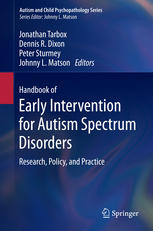

Most ebook files are in PDF format, so you can easily read them using various software such as Foxit Reader or directly on the Google Chrome browser.
Some ebook files are released by publishers in other formats such as .awz, .mobi, .epub, .fb2, etc. You may need to install specific software to read these formats on mobile/PC, such as Calibre.
Please read the tutorial at this link: https://ebookbell.com/faq
We offer FREE conversion to the popular formats you request; however, this may take some time. Therefore, right after payment, please email us, and we will try to provide the service as quickly as possible.
For some exceptional file formats or broken links (if any), please refrain from opening any disputes. Instead, email us first, and we will try to assist within a maximum of 6 hours.
EbookBell Team

5.0
70 reviewsCurrent rates of autism diagnoses have been cause for concern and research as well as rumor and misinformation. Important questions surround the condition: how early can an accurate diagnosis be made? At what age should intervention start? How can parents recognize warning signs? And what causes autism in the first place?
There are no easy answers, but the Handbook of Early Intervention for Autism Spectrum Disorders gives researchers, practitioners, and academics the science and guidance to better understand and intervene. Background chapters survey the history of professional understanding of the disorders and the ongoing debate over autism as a single entity or a continuum. Chapters on best methods in screening, assessment, and diagnosis reflect the transition between the DSM-V and older diagnostic criteria. And at the heart of the book, the intervention section ranges from evidence-based strategies for developing core skills to ethical concerns, cultural considerations, and controversial treatments.
Included in the Handbook's broad-based coverage:
The Handbook of Early Intervention for Autism Spectrum Disorders is a comprehensive reference for researchers, professors, and graduate students as well as clinicians and other scientist-practitioners in clinical child and school psychology, child and adolescent psychiatry, social work, rehabilitation, special education, and pediatric medicine.